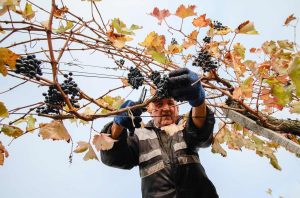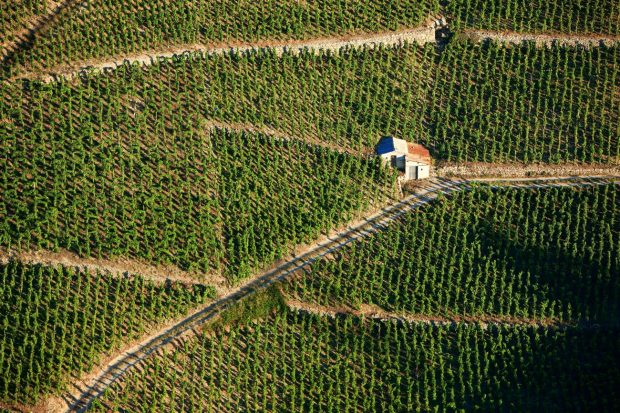In partnership with Beykush Winery, Big Wines and SHABO
With over 2,800 years of history, winemaking in Ukraine is not new. The earliest roots of the country’s winemaking heritage can be traced back through evidence of vinegrowing in the 8th century BC. Viticulture on the territory of modern Ukraine began in earnest with the arrival of the ancient Greeks, who founded settlements on the Crimean peninsula and the Black Sea coast from the 5th century BC. Indeed, maritime trade led to wines made here being enjoyed in the Roman, Byzantine and Venetian empires. Viticulture spread further inland, to more northern areas around Kyiv and Chernihiv in the Middle Ages, supported by monasteries.
Vinegrowing continued in areas such as Crimea that became part of the Ottoman Empire – the Telti-Kuruk variety is thought to have first been planted during this period. Waves of new inhabitants settling in Ukraine from different areas – notably Bulgarian and Swiss settlers in the 18th century – brought their own viticultural traditions, enriching the stylistic diversity of Ukrainian winemaking up to the present.

Harvesting in Beykush Winery’s vineyards. Credit: Arsen Fedosenko
Although today Ukraine may seem a small wine-producing country, it was once much larger: in the 20th century, Ukraine became the largest wine producer within the USSR. As elsewhere, the Soviet government re-organised its agriculture to produce large volumes of high-alcohol wines, often made from new plantings of interspecific hybrids. The result? A huge amount of wine of questionable quality. Ukraine’s vineyards were devastated by the 1985 anti-alcohol decree; precious old vines were destroyed, and the country lost a significant part of its total vineyard area.
Now, many new, small projects have sprung up, helped by a relaxation of licensing requirements. Since the full-scale invasion, the government has not been able to offer producers financial support, but has been able to push through legislative reforms to make it easier to establish vineyards and production sites. The Ukrainian Craft Winery Association was formed to represent this new, modern face of the industry.
Over the past eight years, there has been particular excitement and innovation in the country’s northern, central and eastern regions, with places like Lviv, Dnipro and Kharkiv among key developing vineyard sites. In some of these northern areas, where the climate is more extreme, PIWI (fungus-resistant) grapes have been planted to combat cooler temperatures and frost, but there is now an increasing focus on local varieties, such as Odesa Black and Telti-Kuruk.

Wine ‘hieroglyphs’ at the SHABO Wine Culture Centre
This time of war has been extremely complicated and dangerous. The effects of the full-scale invasion on the wine industry have been deep and wide-ranging, from the immediate impacts of destroyed buildings, wrecked equipment and mined vineyards to the ongoing challenge of electricity blackouts jeopardising cellar conditions. Many winery owners and workers have enlisted to fight, and restrictions have been introduced to limit the sale of alcohol.
But Ukrainian winemakers continue to proudly present their wines on the international stage: in 2022, a group of producers travelled to the ProWein trade fair and introduced their wines to international buyers, supported by Georgian colleagues who shared their stands. In the same year, Ukraine rejoined the OIV (International Organisation of Vine and Wine); its wines are now exported to many countries.
Ukraine’s wine future, therefore, is exciting and promising, as new technology and changes in climate open up wider regions of the country for viticulture, and passionate producers with a determined belief in their future introduce their flagship varieties and unique, historic wine culture to wine lovers worldwide.

Autumn pruning in Beykush Winery’s vineyards. Credit: Arsen Fedosenko
Discover more about Ukrainian wine
Ukraine’s varieties: An overview of the key local and international grapes planted
Women in wine: Introducing the influential female figures shaping Ukrainian wine
|||





